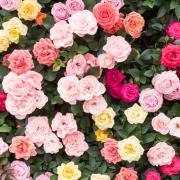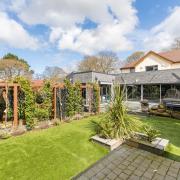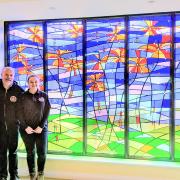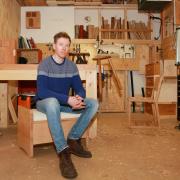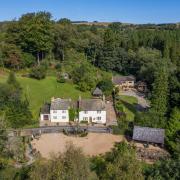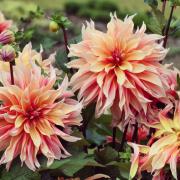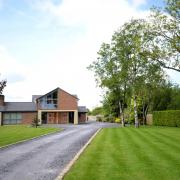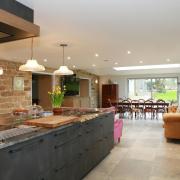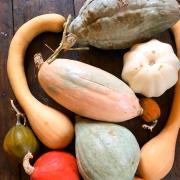For those of us who struggle to operate the average desktop printer, the rhythmic movement of the printing equipment at 1838 Wallcoverings in Clayton le Moors is jaw dropping.
Around 20 metres of wallpaper a minute are printed on each antique machine. Continuous lengths of paper travel seamlessly back and forth across the factory, and through huge industrial rollers where hand-mixed colours are transferred from troughs to bespoke cylindrical ‘stamps’ creating a hand painted effect which dries as the paper moves onward to be rolled, cut and wrapped.
Some of these printers are well over 100 years old and the brand name – 1838 Wallcoverings – reflects the fact that the very first surface print wallpaper machine was pioneered in 1838, just a few miles away in Darwen.

In fact, there are only a handful of these historic surface printers left in the world and four of them are here.
‘All the machines have their individual quirks’ explains James Watson who heads up the firm with his sister Abigail, and whose family has four generations of wallpaper printing experience. Gesturing up to the metal ducting overhead he adds ‘however often we service this one, for example, it still works best with that little door left open up there.’
Considering how old some of these machines are, and how hard they still work for the family firm – it seems that the team are happy to forgive one or two such idiosyncrasies.


‘With regards to machinery, I think we’ve probably got one of the most varied offerings in the world. We’ve got the four Victorian surface printers, we have specialist bead and flock machines (which are constantly being vacuumed out!), we’ve got flexo machines for really fine detailed work, and we stay up to date with a large number of innovative large format digital printers. So we’ve definitely got all bases covered.’
There’s specialist machinery at every turn, and it obviously takes a lot of experience to keep everything running smoothly. ‘Our staff are exceptional’, continues James. ‘These guys match exact colours by eye, and by hand, all day every day and have been for decades. There are members of the team who have been joined by their sons or daughters, bringing in the next generation of print experts. Our reputation is built on this heritage and specialist knowledge. They understand all the machinery inside out and their skill and craftsmanship is second to none – which is how we’re able to uphold such consistently high standards when it comes to our collections.’


The most recent collection to be unveiled, is a second collaboration with the Victoria and Albert Museum in London.
The V&A has vast collections spanning 5000 years of human creativity. It was established in 1852 to make works of art available to all and to inspire British designers and manufacturers.
From these diverse collections, James, Abigail and their dedicated team work alongside the licensing team and archivists at the museum to select any potential artefacts as wallpaper design inspiration, be it a kimono, a painting, a ceramic piece, or fabric design.
And then the hard work begins in earnest.
These 40(ish) chosen pieces then have to be refined down to a collection of just 9.


The team have to decide which designs are best suited to being replicated, how the pattern would repeat across the wall, and at what scale – small and detailed or large mural pieces. They also have to choose the colour variations, and ensure that each design is different enough from its contemporaries in the collection. The 9 finished wallpaper designs will subsequently be available in 30 colourways.
Historic patterns have to be painstakingly recreated or redrawn by hand and altered to suit a discerning modern customer. ‘Our Head of Design Michelle is incredibly skilled, which we’re thankful for because she has to field some some obscure requests as we narrow down the selection; Can you open up this coral so we can see more of the background colour? Can you hand paint a flower in this style if we remove the bird? Can you give this macaw a friendlier face?
‘Coincidentally, when we began working with the Museum for our first V&A collection which launched last year, we ended up choosing three designs that had links to Lancashire. Out of such a vast and diverse collection spanning thousands of years – we were still unknowingly drawn to our regional heritage.’
This year’s vibrant and sophisticated collection, V&A II decorative papers, is already proving popular. Among others, it features a joyful Pineapple Garden design based on a woven silk from 1707, an abundant Rhododendron design adapted from a 1920s woodblock wallpaper, and a Date Palm mural adapted from a delicate 1860s watercolour.

Finished wallpapers are printed on a range of sustainable eco-woven substrates that include plant fibres instead of the less eco-friendly polyester, and are designed for easy paste-the-wall application. The time and consideration that goes into the process of curating the artefacts, the design phase, the testing, the colour matching and the print production inevitably lead to a high end product. So it's no surprise that 1838 Wallcoverings are in demand the world over. They are available online and via independent stockists in 70 countries and can even be sent via next-day delivery to America. 800 V&A II pattern books were packed and bound for India when we visited the factory.
So, are the team relaxing and admiring all their hard work on the second V&A collaboration?
‘Creating an 1838 Wallcoverings collection takes so long, we’re already working on next year’s. Each collection really has to be better than the last, doesn’t it? You’ve got to dig deeper, and research further – but that also makes it even more rewarding each time.’





